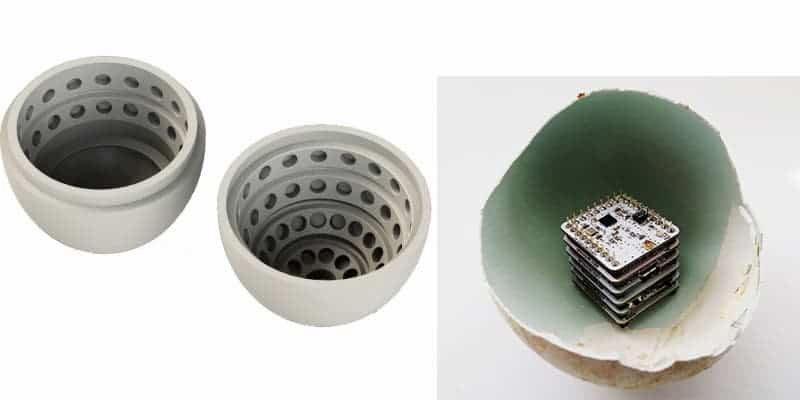Vultures all over the world in big trouble, with many species faced with extinction. When an animal is faced with impending doom, conservationists often resort to breeding in a controlled environment. With vultures, this is much more difficult to do because their eggs hatch under very specific conditions of temperature, humidity and sunlight. It’s a complex interaction that we still know little about, but Britain’s International Centre for Birds of Prey hopes to learn more by using an innovative tool: fake 3-D printed eggs packed with sensors.

The idea is that these fake eggs, placed alongside real ones, will dupe the vultures into thinking they belong to them and tend to them. Incubating a vulture egg isn’t as easy as just sitting on it. The female will periodically throughout the day rotate and move the eggs about so the conditions are just about right. Minute changes in temperature or humidity can spoil the whole batch, as conservationists have learned the hard way.
Helped by Microduino, the ICBP hopes their fake eggs will provide all the necessary information so that conservationists can then incubate their own eggs without having to rely on vultures. But even so, it will be a tricky process since every vulture will incubate the eggs differently depending on the where the nest is located. Data gathered from Indian vultures won’t work to incubate African vultures, for instance. This is why the ICBP hopes the fake eggs, called EggDuino, will interest other organizations.
First, you need a 3-D printer which are pretty easy to come by these days. The sensors ship from Microduino for $200.

Often seen as dirty and repulsive, these scavengers are in fact very important to the ecosystem. While munching on leftover carcasses might not be your ideal diner, the vultures don’t mind it. Moreover, many diseases are kept at bay this way by cleaning up carrion.
Vulture populations have dwindled all over the world, particularly in Asia and Africa. In 1980, vultures were so common in India that it was considered the most common large bird of prey in the world. Today, their numbers have collapsed by nearly 99 percent. Of the 23 vulture species of the world, 16 are considered near threatened, vulnerable to extinction, endangered or critically endangered.
Their decline is being driven by human activities which leave them with fewer nesting places and food. There’s also secondary poisoning which has become more and more rampant recently. Vultures feed on carcasses laced with poison, intended to kill jackals or other predatory carnivores. Or they are poisoned by the lead in animals left behind by hunters.
In this context, the electronic egg looks like a great idea. “It could also be used for eagles, it could be used for kites, it could be used for anything that has an egg,” said Adam Bloch, a conservationist developing the electronic egg at the ICBP.
Was this helpful?



